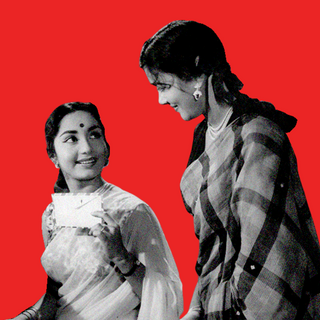
Ana de Armas Expresses Concern About Nude Clips From ‘Blonde’ Spreading Online
The anxiety speaks to the blurred lines between cinema and Internet culture, and the non-consensual gaze that actors are vulnerable to.

Can you consent to a gaze?
When actor Ana de Armas said she was upset by the fact that nude clips from her upcoming film Blonde may spread online, she spoke to the heart of what makes consent in cinema complicated. Blonde is an adaptation of Joyce Carol Oates’ novel of the same name, itself a fictionalized account of Marilyn Monroe’s life. When de Armasplays Monroe as a character, there are several layers of consent to unpack. It’s Monroe’s body in the nude when it’s depicted in the film — itself a murky territory considering she’s not alive to consent to her body’s depiction in that way. But when stills or clips proliferate online, the body in question belongs to de Armas, the person. The question then arises: when one consents to participate in art, do they relinquish control over the gaze that consumes them?
There’s a commodification at play that art hasn’t yet sufficiently addressed. Nudity in film is art, and considered part of the process. Amid growing criticism of how intimacy is dealt with during the shoot, film industries have increasingly turned to intimacy coordinators. But this addresses just one part of the problem: the other, in which women’s bodies are taken out of context and commodified on the internet, remains unspoken of.
Earlier this year, actor Jesse Williams’ nude scene in the Broadway play Take Me Out was recorded by an audience member and leaked online. The Actors’ Equity Association called it sexual harassment, further noting that “It is a violation that impedes our collective ability to tell stories with boldness and bravery.”
Related on The Swaddle:
Internet ‘Thirsting’ Is Sexualizing Celebrities in Unforeseen Ways
“At every performance, there is a mutual understanding between the audience and the performers that we are sharing an experience limited to this time and place,” their statementgoes on to read. The idea is that actors perform their role under a specific context, consenting to nudity and sex within that context alone. When taken out of context and consumed with a different gaze, it becomes a violation of the terms they consented to.
While the Williams incident pertains to the stage, there’s a broader conversation to be had about nudity and sex on film too. It is true that a film, once released, exists in perpetuity — to be engaged with and experienced at any time and place, and by anyone who wishes to. There’s a contract that artists enter into with their audiences based on a mutual understanding that both are imperative for a work of art to exist in the world — actors would play in a vacuum without an audience, and audiences would stare into a creative abyss without actors embodying characters and stories.
But when their moments of performance — especially the vulnerable ones — are chopped and distributed for a purpose other than that for which it was intended, the audience violates their end of the contract. They’re no longer engaging with the art itself — worse, they’re commodifying the artist and selling them for parts.
The phenomenon adds a new element to conversations about the male gaze — an idea coined by film critic Laura Mulvey. “In a world ordered by sexual imbalance, pleasure in looking has been split between active/male and passive/female… in their traditional exhibitionist role women are simultaneously looked at and displayed, with their appearance coded for strong visual and erotic impact,” she wrote, in the context of how women are depicted on a screen. But what of the male gaze that takes place off-screen?
Related on The Swaddle:
Can ‘Authentic’ Sex Scenes Ever Safeguard Actors’ Interests?
“The argument goes that she [actor Sydney Sweeney] — and celebrities in general — put herself out there; commenting on her pictures is thus a free-for-all… the male gaze is the default form of looking at and processing images of women in the public eye,” The Swaddle noted earlier, about how internet culture commodifies women’s bodies in unforeseen ways.
Arguably, this is a violation of consent that has to be seen on par with the non-consensual distribution of nudes online. It doesn’t make a difference that an actor’s image already exists in the public domain — what matters is the context of the image. As a character, the nudity imbues the person with a sense of control over their bodies and their image. Outside of the character, there’s a loss of ownership — an actor’s body no longer belongs to them, as it becomes subject to a gaze they never signed up for.
The irony in this particular instance is that figures like Marilyn Monroe were precisely the objects of such a gaze — one that consumed, sexualized, and separated the person from their body. Today, actors like Sydney Sweeney arguably go through the same thing. Sweeney’s sex scenes in Euphoriawere the subject of much debate, but they’re also what turned her into a sex symbol as a person, beyond her character. But there’s a fine line between turning someone into iconography, and consuming their image without their consent — it’s a dissociation between person and body that needs to be taken seriously.
de Armas’ anxiety about the clips from her film speaks to how consent is frequently undermined — and thought to be relinquished — when performing a character on screen. It may be out of actors’ hands what happens to their images when their films are released, but it shouldn’t be. Without conversations about what actors can consent to, and the gaze that we collectively agree upon, it compromises art itself — as not many may be willing to put themselves in a vulnerable position where their image is used against their will.
Rohitha Naraharisetty is a Senior Associate Editor at The Swaddle. She writes about the intersection of gender, caste, social movements, and pop culture. She can be found on Instagram at @rohitha_97 or on Twitter at @romimacaronii.
Related


How a Home‑Made Kung Fu Movie Captured Guwahati’s Imagination
